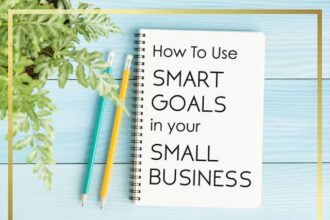Every business dreams of a bustling customer base, a steady stream of new faces discovering and falling in love with what they offer.
But let’s be real: for most startups and small to medium-sized businesses, the idea of splashing out on expensive ad campaigns feels like a distant fantasy, often reserved for the big players.
The pressure to acquire new customers is immense, yet the marketing budget might feel painfully limited.
So, how do you attract a loyal following, boost your sales, and truly scale your customer base without breaking the bank?
The answer lies in mastering Low-Cost Customer Acquisition. This isn’t about cutting corners; it’s about being strategic, creative, and incredibly efficient with your resources.
It’s about leveraging the power of authentic connection and smart tactics to achieve big results.
Ready to multiply your reach and foster sustainable growth, even if your budget is modest? Let’s dive into the most effective strategies for Low-Cost Customer Acquisition!
The Acquisition Dilemma: Why Expensive Ads Aren’t Always the Answer
While paid advertising has its place, relying solely on it for customer acquisition can be a trap for many businesses:
- Budget Strain: High ad spend quickly depletes resources, especially for SMEs.
- Ad Fatigue: Consumers are bombarded with ads daily, leading to diminishing returns.
- Authenticity Overload: People crave genuine connections, not just sales pitches.
- Unsustainability: Once the ad budget runs out, so does the traffic, making it hard to build long-term relationships.
This is why Low-Cost Customer Acquisition focuses on building an organic, sustainable engine for growth that continues to deliver even when your wallet is lean.
The Pillars of Low-Cost Customer Acquisition: Your Smart Growth Engine
Here are the proven strategies that help you acquire customers without hefty advertising bills:
1. Educate with Content Marketing: Become a Go-To Resource
Instead of directly selling, offer value that attracts your ideal customer.
- What it is: Creating and distributing valuable, relevant, and consistent content to attract and retain a clearly defined audience. This could be blog posts, how-to guides, explainer videos, infographics, podcasts, or free templates.
- How it works: When you provide solutions to their problems or answer their questions, you build trust and establish yourself as an authority. People naturally gravitate towards helpful resources.
- Low-Cost Power: Focus on Search Engine Optimization (SEO) to ensure your content ranks high on Google. This brings in “warm” leads who are actively searching for solutions you offer, without paying for clicks.
- Action: Start a blog on your website. Create a simple “How-To” video series for common customer challenges. Share valuable tips on social media.
2. Connect Through Social Media Engagement: Build Communities, Not Just Followers
Social media is a powerful tool for direct interaction and community building.
- What it is: Going beyond simply posting promotions. It’s about genuine interaction, listening, and fostering a sense of belonging around your brand.
- How it works: Engage in conversations, respond to comments, ask questions, run polls, and share user-generated content. Go live to answer questions or showcase behind-the-scenes. Join relevant groups where your target audience hangs out and offer valuable insights.
- Low-Cost Power: It’s largely free to participate and build organic reach. Authentic engagement can turn casual followers into loyal customers who advocate for your brand.
- Action: Dedicate time daily to responding to messages and comments. Share customer testimonials. Run a Q&A session on Instagram Live or Facebook.
3. Amplify Through Strategic Partnerships & Collaborations: Grow Together
Team up with others who share your audience but aren’t direct competitors.
- What it is: Collaborating with complementary businesses, influencers, or organizations to cross-promote each other’s offerings.
- How it works: If you sell organic skincare, partner with a local wellness blogger or a yoga studio for a joint workshop or cross-promotion. If you’re a web designer, collaborate with a digital marketing agency.
- Low-Cost Power: You tap into their existing audience, sharing the marketing effort and cost. Micro-influencers (those with smaller but highly engaged followings) can be incredibly effective and affordable for authentic reach.
- Action: Identify 2-3 complementary businesses or micro-influencers. Reach out with a clear, mutually beneficial collaboration idea.
4. Incentivize with Referral Programs: Turn Customers into Advocates
Your happiest customers are your best marketing team.
- What it is: A structured program that rewards existing customers for referring new ones to your business.
- How it works: When a customer has a great experience, they’re likely to tell others. A referral program gives them an extra reason to do so. Offer a discount for both the referrer and the new customer, or a special gift.
- Low-Cost Power: You only pay for performance (when a new customer signs up). It’s incredibly cost-effective because trust from a friend is far more powerful than any ad.
- Action: Set up a simple referral system. Make it easy for customers to share their unique referral code or link. Promote it clearly to your existing customer base.
5. Nurture with Email Marketing: Convert Leads into Loyal Customers
Once you have contact information, email marketing is your direct line to building relationships.
- What it is: Building an email list and sending targeted, valuable content or offers to your subscribers.
- How it works: People opt-in because they’re interested. You can then nurture them with educational content, exclusive offers, behind-the-scenes insights, and personalized messages that guide them towards a purchase.
- Low-Cost Power: Many email marketing platforms (like Mailchimp, Sendinblue) offer free tiers for small lists. Once you have a list, sending emails is incredibly cheap compared to paid ads.
- Action: Offer a lead magnet (e.g., a free guide, a discount code) on your website or social media in exchange for an email address. Segment your list to send relevant messages.
Keys to Success with Low-Cost Customer Acquisition: Make Every Effort Count
These strategies are powerful, but their success hinges on smart execution:
- Identify Your Target Audience (Precisely!): Even with low-cost methods, precision is vital. Know exactly who you’re trying to reach – their pain points, interests, and where they spend their time online. This ensures your content and engagement efforts are truly relevant.
- Measure Campaign Success (Beyond Vanity Metrics): Don’t just look at likes or shares. Focus on what truly matters: website traffic, leads generated, actual conversions, and the cost per acquisition for each low-cost channel.
- Optimize for Growth (Iterate, Iterate, Iterate): Nothing works perfectly from day one. Continuously analyze your data. What content gets the most engagement? Which partnerships yield the most leads? What email subject lines perform best? A/B test everything, learn from your results, and refine your strategies.






